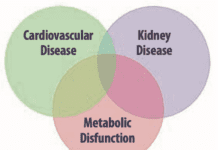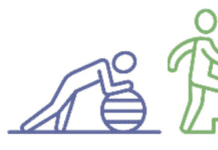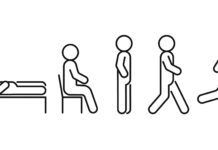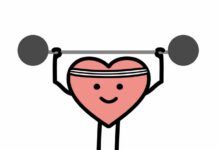Still need a nudge to get going? A quartet of new studies in the Archives of Internal Medicine should provide a scientific shove, out of your easy chair and into an exercise regimen.Exercise has previously been linked to beneficial effects on arthritis, falls and fractures, heart disease, lung disease, cancer, diabetes and obesity, according to Jeff Williamson, MD, MHS, and Marco Pahor, MD, of University of Florida-Gainesville, in an accompanying commentary. Regular physical activity has also been associated with greater longevity as well as reduced risk of physical disability and dependence- the most important health outcome, even more than death, for most older people. These new findings, they add, move the scientific enterprise in this area further along the path toward the goal of understanding the full range of important agingrelated outcomes for which exercise has a clinically relevant impact.Midlife Exercise Linked to Better Health in Later Years
The first new finding is the broadest: Exercise now to be healthier later. Among women who live to age 70 or older, those who regularly participated in physical activity during middle age appear more likely to be in better overall health.Qi Sun, MD, ScD, of the Harvard School of Public Health, and colleagues analyzed data from 13,535 participants in the Nurses Health Study. The women reported their physical activity levels in 1986, at an average age of 60. Among those who had made it to age 70 or older as of 1995 to 2001, those who had higher levels of physical activity at the beginning of the study were less likely to suffer chronic diseases, heart surgery or any physical, cognitive or mental impairments. Only 1,456 women qualified as successful survivors, meaning they reached 70 free of cognitive and physical disabilities and 10 chronic conditions.The most-active one-fifth of the women were nearly twice as likely to be successful survivors compared to the most sedentary group. Even those in the middle in activity level improved their chances of a healthy old age by 37%. Successful survivors walked 32% more and had overall higher physical activity levels.Exercise Strengthens Bones, Reduces Falls
Another way exercise can improve your odds of aging well is to strengthen your bones and reduce the risk of falls. In a second study, women age 65-plus assigned to an exercise program for 18 months were found to have to have denser bones andless likelihood of falling than women in a control group. Wolfgang Kemmler, PhD, and colleagues at Friedrich-Alexander University Erlangen-Nurnberg in Germany studied a total of 246 older women. Half exercised four days per week with special emphasis on intensity, while the rest participated in a wellness program focused on well-being.Among the 227 women who completed the study, the 115 who exercised had higher bone density in the spine and hip, along with a 66% reduced rate of falls. Fractures due to falls were twice as common in the control groups compared to the women who exercised.Resistance Training May Boost Cognitive Skills in Older Women
Could weight-lifting and other resistancetraining exercises help keep your brain sharp as you age? Another study found that a year of once- or twice-weekly resistance training not only strengthened the muscles of older women but also improved some cognitive functions.Teresa Liu-Ambrose, PhD, PT, of Van – couver Coastal Health Research Institute and the University of British Columbia, and colleagues studied 155 women age 65 to 75. Participants were randomly assigned to participate in resistance training once a week or twice a week or to twice-weekly balance and tone training, a control group. After a year, women in both resistance training groups significantly improved their scores on tests of selective attention (maintaining mental focus) and conflict resolution.Active Elderly at Reduced Risk of Cognitive Impairment
In another study suggesting exercise helps keep you in shape above your neck as well as below, German researchers reported a link between moderate or high physical activity and lower risk of cognitive impairment in older adults. Thorleif Etgen, MD, of Technische Universitt Mnchen and colleagues examined physical activity and cognitive function in 3,903 participants over age 55 for two years.At the beginning of the study, 418 participants had cognitive impairment. After two years, 207 of the remaining unimpaired subjects developed cognitive impairment. People who were moderately active at the start of the study were less than half as likely as sedentary participants to develop cognitive impairment, and those with the highest activity level were even less at risk.Looking ahead, Drs. Williamson and Pahor announced a clinical trial that could provide more definitive results: The Lifestyle Interventions and Indepen dence for Elders (LIFE) study will follow 1,600 sedentary seniors, randomly assigned to either an exercise program or a health-education control group, for four years.TO LEARN MORE: Archives of Internal Medicine, Jan. 25, 2010, archinte.ama-assn.org/content/vol170/ issue2/index.dtl. 2008 Physical Activity Guidelines www.health.gov/paguidelines.























